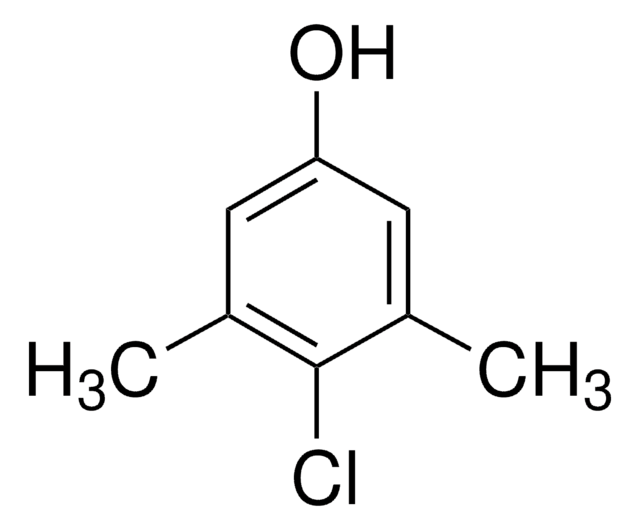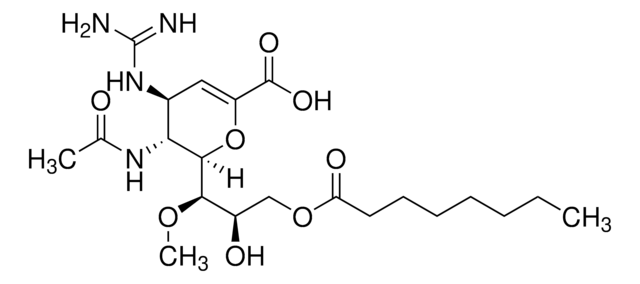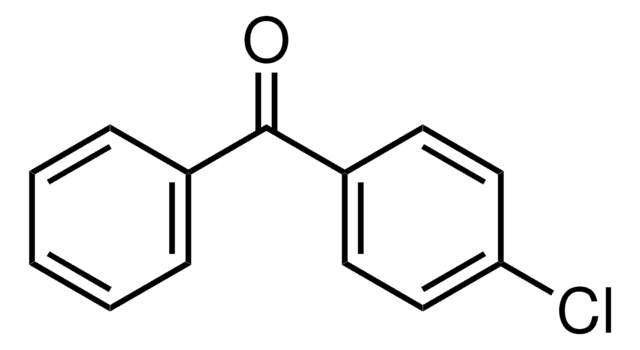C38303
4-Chloro-3,5-dimethylphenol
99%
Sinónimos:
4-Chloro-3,5-xylenol, 4-Chloro-sym-m-xylenol, PCMX
About This Item
Productos recomendados
Análisis
99%
formulario
powder
mp
114-116 °C (lit.)
cadena SMILES
Cc1cc(O)cc(C)c1Cl
InChI
1S/C8H9ClO/c1-5-3-7(10)4-6(2)8(5)9/h3-4,10H,1-2H3
Clave InChI
OSDLLIBGSJNGJE-UHFFFAOYSA-N
¿Está buscando productos similares? Visita Guía de comparación de productos
Categorías relacionadas
Aplicación
- Synthesis and Spectroanalytical Studies of a New Azodye Derived From 2-Amino-6-ethoxybenzothiazole and 4-Chloro-3,5-dimethylphenol: Discusses the synthesis and characterization of a new azo dye derived from 4-chloro-3,5-dimethylphenol, highlighting its potential applications in dyeing and pigments (AA Ali, 2017).
- Crystal structure of the co-crystalline adduct 1, 3, 6, 8-tetraazatricyclo dodecane (TATD)–4-chloro-3,5-dimethylphenol (1/1): This paper details the crystal structure of a complex formed with 4-chloro-3,5-dimethylphenol, providing insights into its structural properties (A Rivera et al., 2015).
Palabra de señalización
Warning
Frases de peligro
Consejos de prudencia
Clasificaciones de peligro
Acute Tox. 4 Oral - Eye Irrit. 2 - Skin Irrit. 2 - Skin Sens. 1
Código de clase de almacenamiento
11 - Combustible Solids
Clase de riesgo para el agua (WGK)
WGK 1
Equipo de protección personal
dust mask type N95 (US), Eyeshields, Faceshields, Gloves
Certificados de análisis (COA)
Busque Certificados de análisis (COA) introduciendo el número de lote del producto. Los números de lote se encuentran en la etiqueta del producto después de las palabras «Lot» o «Batch»
¿Ya tiene este producto?
Encuentre la documentación para los productos que ha comprado recientemente en la Biblioteca de documentos.
Los clientes también vieron
Nuestro equipo de científicos tiene experiencia en todas las áreas de investigación: Ciencias de la vida, Ciencia de los materiales, Síntesis química, Cromatografía, Analítica y muchas otras.
Póngase en contacto con el Servicio técnico











![Poly[dimethylsiloxane-co-(3-aminopropyl)methylsiloxane] eq. wt. 4,400 Amine](/deepweb/assets/sigmaaldrich/product/structures/427/354/e688e87b-f9db-4070-9e27-fccd23c1dfaa/640/e688e87b-f9db-4070-9e27-fccd23c1dfaa.png)

